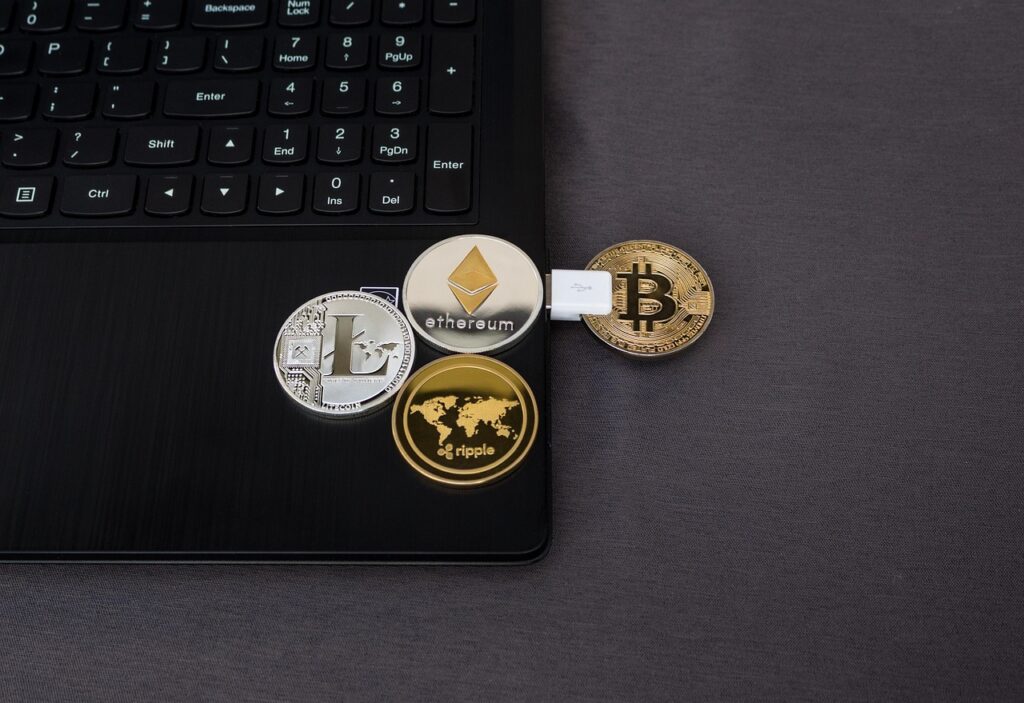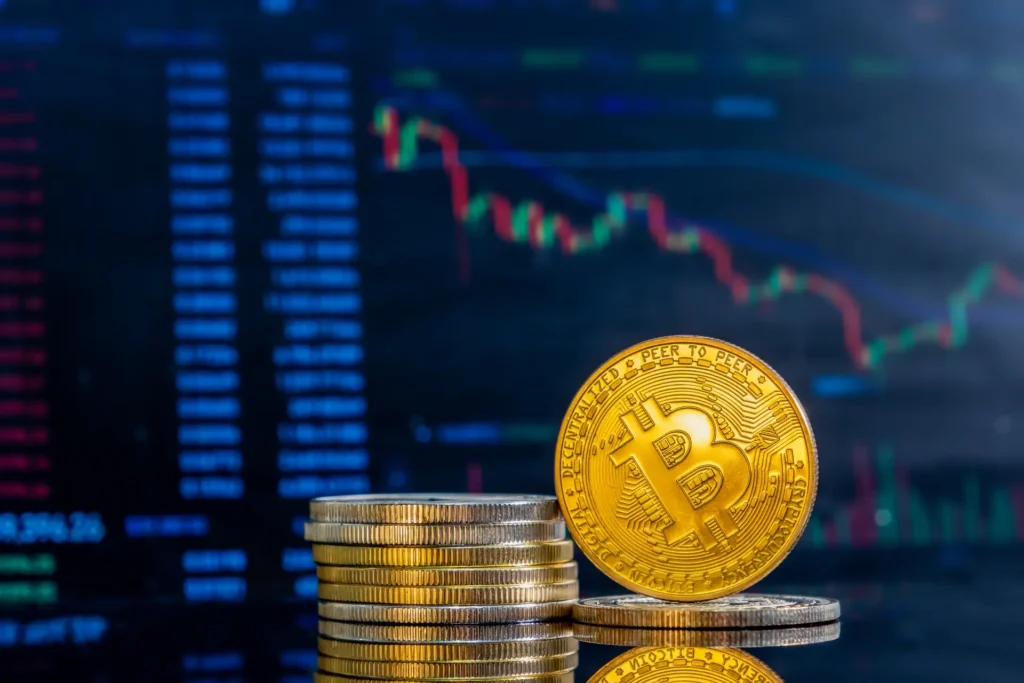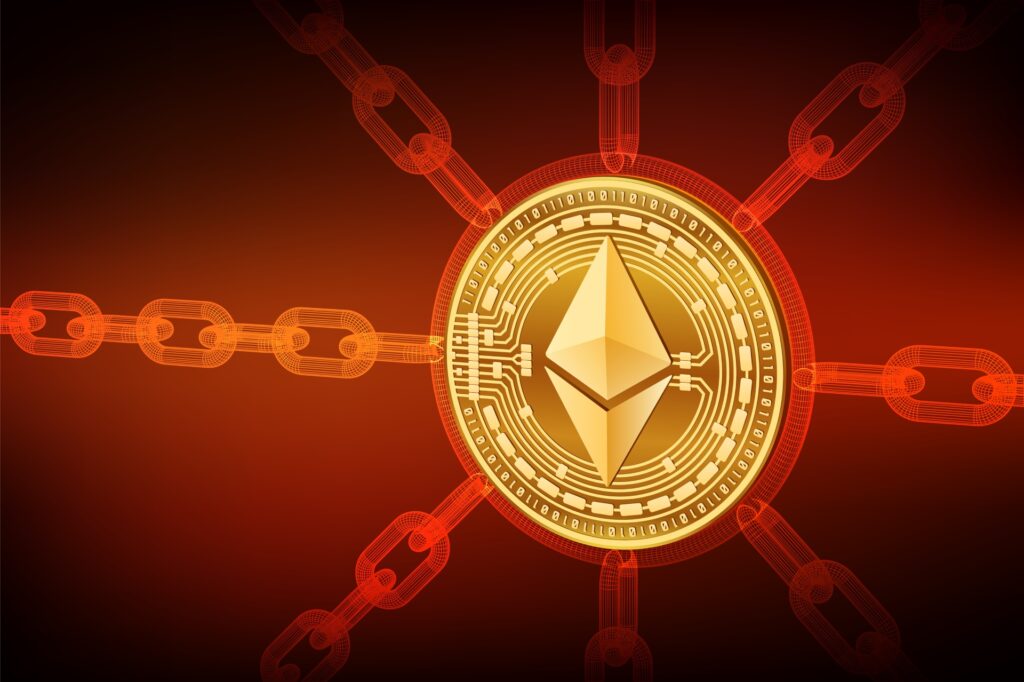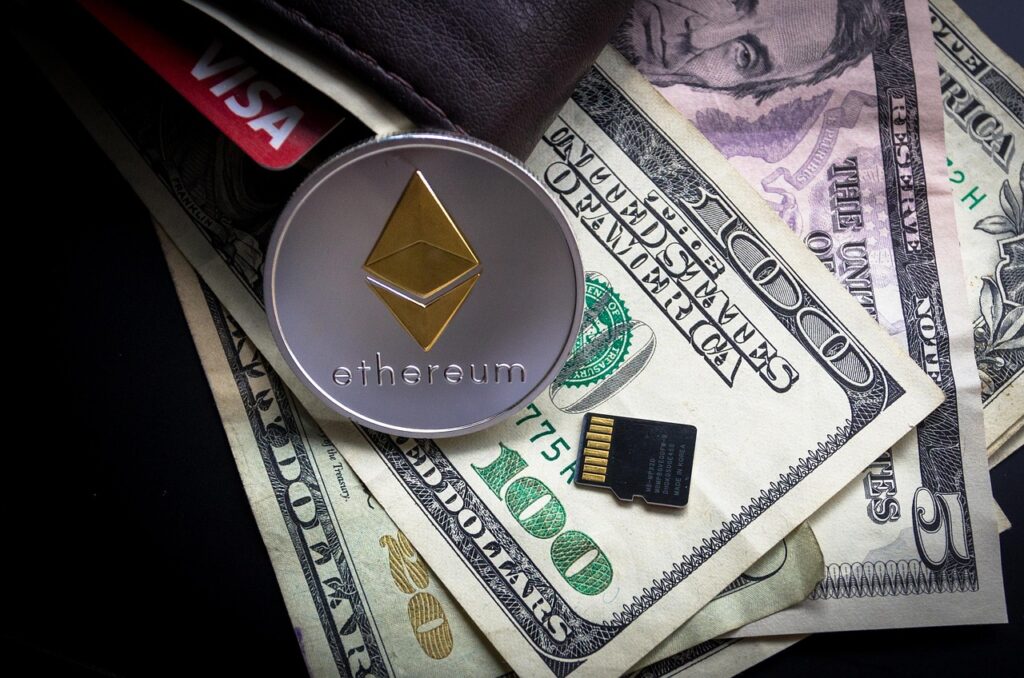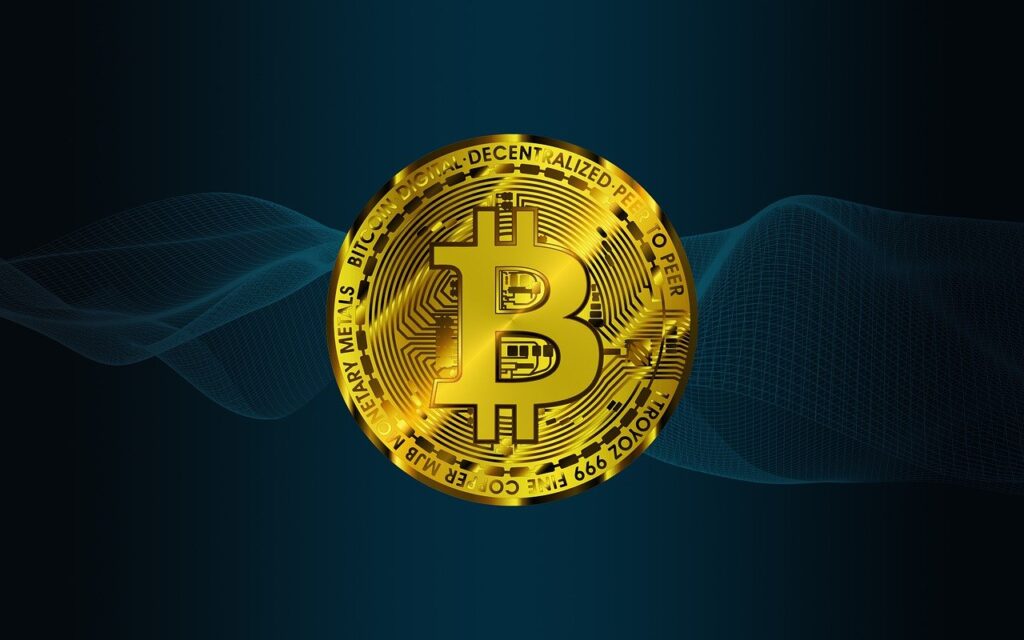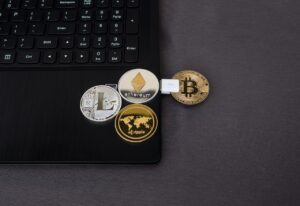Understanding the costs involved when buying cryptocurrency is pretty important. Fees can really eat into your investment returns, making a big difference over time. This article will help you figure out what’s the cheapest way to buy crypto, giving you tips to keep more of your money in your pocket. We’ll look at different fee types and strategies to lower them, so you can make smart choices.
Table of Contents
- 1 Key Takeaways
- 2 Why Fees Matter: How Crypto Costs Affect Your Investment Returns
- 3 Compare Fee Structures: Maker vs. Taker, Deposit & Withdrawal Fees
- 4 Maker vs. Taker Fees: What’s the Difference?
- 5 Deposit Fees
- 6 Withdrawal Fees
- 7 Top Exchanges with the Lowest Trading Fees
- 8 Fee Discounts with Native Tokens or VIP Programs
- 9 Using Bank Transfers (ACH, SEPA, UPI): Cheapest Deposit Methods
- 10 Crypto-to-Crypto or Stablecoin Deposits: Zero-Fee Transfers
- 11 Peer-to-Peer (P2P) Purchasing: Zero Trading Fees on Some Platforms
- 12 Avoid Credit/Debit Payments: High Convenience, Higher Costs
- 13 Buy in Bulk & Use Dollar-Cost Averaging (DCA) to Save on Fees
- 14 Buying in Bulk: Pros and Cons
- 15 Dollar-Cost Averaging (DCA) for Fee Reduction
- 16 Combining Strategies: Bulk Buys with DCA
- 17 Watch for Hidden Costs: Spreads, Conversion & Network Fees
- 18 Spreads
- 19 Conversion Fees
- 20 Network Fees (Gas Fees)
- 21 Platform Choices Summary: Choose Based on Your Trading Style
- 22 Frequently Asked Questions
- 23 Why are fees important when buying crypto?
- 24 Which crypto exchanges have the lowest fees?
- 25 Are there ways to get discounts on crypto trading fees?
- 26 What is the cheapest way to deposit money to buy crypto?
- 27 Do crypto-to-crypto trades or stablecoin deposits have lower fees?
- 28 Can I save on fees by using peer-to-peer (P2P) platforms?
- 29 Should I avoid using credit or debit cards to buy crypto?
- 30 What are some hidden costs to watch out for when buying crypto?
Key Takeaways
- Always check the fee structure of any crypto platform before you start trading. Maker and taker fees, plus deposit and withdrawal costs, can vary a lot.
- Using bank transfers (like ACH or SEPA) for deposits is often the cheapest option compared to other payment methods.
- Avoid using credit or debit cards for crypto purchases if you want to save money, as they usually come with higher fees.
- Consider using stablecoins or crypto-to-crypto transfers for lower-cost transactions.
- Buying larger amounts less often, or using dollar-cost averaging, can help reduce the impact of fixed fees over time.
Why Fees Matter: How Crypto Costs Affect Your Investment Returns
It’s easy to get caught up in the excitement of crypto, but don’t forget the fees! They might seem small at first, but they can eat into your profits over time. Think of it like this: every fee you pay is less money you have to invest and grow. Ignoring fees is like throwing money away.
Consider this simple example:
| Transaction | Fee (%) | Investment | Net Investment |
| Buy Bitcoin | 0.2% | $1,000 | $998 |
| Sell Bitcoin | 0.2% | $1,100 | $1,097.80 |
Even small fees can reduce your overall return. Now, let’s look at some ways to keep those fees down.
- Fees reduce your capital gain.
- Fees can be added to your cost basis.
- Fees can be subtracted from your proceeds.
It’s important to remember that even seemingly small fees can add up significantly, especially if you’re trading frequently. Always factor in the cost of fees when evaluating the potential profitability of a trade. Over time, minimizing these costs can make a substantial difference in your overall investment performance.
Compare Fee Structures: Maker vs. Taker, Deposit & Withdrawal Fees
It’s easy to overlook the details of crypto exchange fees, but they can seriously eat into your profits. Understanding how these fees work is key to keeping more of your investment. Let’s break down the different types of fees you’ll encounter.
Maker vs. Taker Fees: What’s the Difference?
Most exchanges use a maker-taker fee model. This means you’ll pay different fees depending on whether you’re adding liquidity to the exchange (maker) or taking liquidity away (taker).
- Taker Fees: When you place an order that is immediately filled, you’re a taker. You’re “taking” liquidity off the exchange. Because of this, taker fees are generally higher.
- Maker Fees: When you place an order that isn’t immediately filled, like a limit order, you’re a maker. You’re “making” liquidity available. Maker fees are usually lower, sometimes even zero, to incentivize providing liquidity.
Think of it like this: exchanges need people to both buy and sell to function smoothly. Makers help provide that balance, so they get rewarded with lower fees. Takers are just going with the flow, so they pay a bit more.
Deposit Fees
Some platforms charge fees for depositing funds, especially when using fiat currency. These fees can vary widely depending on the payment method. For example, credit and debit card deposits often come with higher fees compared to bank transfers. Always check the deposit fees before transferring funds to avoid surprises.
Withdrawal Fees
Withdrawal fees are charged when you transfer cryptocurrency off the exchange to an external wallet. These fees cover the cost of processing the transaction on the blockchain. Withdrawal fees can vary significantly depending on the cryptocurrency and the network congestion. It’s a good idea to compare withdrawal fees across different exchanges, especially if you plan to move your crypto frequently. Here’s a quick comparison:
| Exchange | Withdrawal Fee (BTC) |
| Exchange A | 0.0005 BTC |
| Exchange B | 0.0008 BTC |
| Exchange C | 0.0006 BTC |
It’s worth noting that some exchanges offer fee discounts if you use their native token or participate in their VIP programs. These discounts can significantly reduce your overall trading costs. Also, keep an eye out for minimum withdrawal amounts, as you might not be able to withdraw small amounts of crypto if they don’t meet the minimum threshold.
Top Exchanges with the Lowest Trading Fees

When you’re trying to figure out what the cheapest way to buy crypto is, the platform you choose is a big piece of the puzzle. It’s not always a straightforward decision, because different exchanges are good for different types of users.A crypto exchange is more than just its fee schedule; you also have to consider what coins it offers and how simple it is to use. Some platforms are built for high-volume traders, while others are better for someone just starting.
Here’s a quick look at a few platforms known for their competitive fees. Keep in mind that these numbers can change, but this gives you a general idea.
| Exchange | Standard Trading Fee (Maker/Taker) | Best For |
| Binance.US | 0.075% / 0.18% | Low-cost spot trading |
| Kraken Pro | 0.16% / 0.26% | Experienced traders |
| Robinhood | 0% Commission | Simple, fee-free trades |
Ultimately, the right platform for you will depend on how often you trade and what you’re buying. A casual investor has different needs from a day trader, and the fee structures reflect that.
It’s important to look at the whole picture. An exchange might advertise a very low trading fee but then have high costs for withdrawing your crypto to an external wallet. Always check the deposit, withdrawal, and spread costs before committing.
To break it down a bit more:
- Binance.US: This platform often has some of the lowest flat-rate fees for basic trades. They also run promotions, like zero-fee trading on specific Bitcoin pairs, which can save you money.
- Kraken Pro: This is the more advanced version of Kraken. Its fees get lower as your trading volume increases, making it a solid option for people who are very active in the market.
- Robinhood: The main draw here is the zero-commission trading. It sounds perfect, but remember they make money on the spread—the small difference between the buy and sell price. It’s an indirect cost to be aware of.
Fee Discounts with Native Tokens or VIP Programs
Many crypto exchanges provide opportunities to lower your trading fees by using their native tokens or participating in VIP programs. It’s like getting a loyalty discount at your favorite store, but for crypto!
Holding and using an exchange’s native token can significantly reduce your trading fees. For example, Binance offers a discount if you pay fees using BNB. Other exchanges like WhiteBIT also offer discounts for holding their native tokens.
Consider these points:
- Native tokens often provide fee reductions.
- VIP programs reward high-volume traders with lower fees.
- Some exchanges offer staking rewards for holding their tokens.
It’s worth checking if your preferred exchange has a native token or a VIP program. These can lead to substantial savings, especially if you trade frequently. Always do the math to see if the benefits outweigh any potential risks or costs associated with holding the token or meeting the VIP requirements.
Here’s a simplified example of how native token discounts might work:
| Exchange | Native Token | Discount | Notes |
| Binance | BNB | 25% | Discount varies based on BNB holdings |
| WhiteBIT | WBT | Up to 7.74% | Discount varies based on WBT holdings |
Before you buy Crypto Trading Fund, explore the fee reduction options available on the exchange you plan to use. These discounts can add up over time.
Using Bank Transfers (ACH, SEPA, UPI): Cheapest Deposit Methods
Bank transfers, including ACH (Automated Clearing House) in the United States, SEPA (Single Euro Payments Area) in Europe, and UPI (Unified Payments Interface) in India, often represent the most cost-effective ways to deposit funds into your crypto exchange account. Let’s face it, nobody wants to throw away money on fees when you could be buying more crypto.
Using these methods can significantly reduce or even eliminate deposit fees compared to credit/debit cards or wire transfers.
Here’s a breakdown of why these methods are generally cheaper:
- Lower processing costs for the exchange.
- Direct transfer of funds, cutting out intermediaries.
- Often subsidized or offered for free as a customer acquisition strategy.
It’s important to note that while deposits might be cheap, withdrawal fees can still apply. Always check the exchange’s fee structure for both deposits and withdrawals to get a complete picture of the costs involved.
Different exchanges have different policies, so it pays to shop around. For example, some exchanges offer free ACH deposits but charge a small fee for withdrawals. Others might have minimum deposit amounts to qualify for the free transfer. Also, keep in mind that processing times can vary. ACH transfers, for instance, might take a few business days to clear, while other methods could be faster. If you’re in a hurry to buy, this might be a factor to consider. Paying for travel with crypto offers numerous benefits, but you need to get the funds onto the exchange first!
Crypto-to-Crypto or Stablecoin Deposits: Zero-Fee Transfers
One way to potentially cut down on costs is by using crypto-to-crypto or stablecoin deposits. Many exchanges don’t charge deposit fees for cryptocurrency transfers, especially when moving assets between your wallets or from other exchanges. This can be a smart move if you already hold crypto and want to move it to a different platform for trading or other purposes. It’s a good idea to check the specific terms of the exchange you’re using, but generally,crypto deposits are free.
Using crypto-to-crypto transfers can be a cost-effective way to move funds between exchanges, especially if you’re trying to avoid fiat deposit fees. Just be mindful of network congestion and potential transfer times.
Here’s a breakdown of why this can be beneficial:
- Avoid Fiat Fees: Bypassing traditional currency deposits (like USD or EUR) can help you dodge those pesky fees.
- Faster Transfers: Crypto transfers can sometimes be quicker than bank transfers, depending on the network congestion.
- Flexibility: You can easily move your crypto between different platforms to take advantage of different trading opportunities or features.
Stablecoins can be particularly useful here. Since they’re designed to maintain a stable value (usually pegged to a fiat currency like the US dollar), they offer a less volatile way to move value between exchanges compared to other cryptocurrencies. This is especially helpful if you’re concerned about price fluctuations during the transfer.
Peer-to-Peer (P2P) Purchasing: Zero Trading Fees on Some Platforms
Peer-to-peer (P2P) platforms offer a different way to buy and sell crypto, cutting out the traditional exchange as an intermediary. This can sometimes translate to zero trading fees, making it an attractive option for budget-conscious traders. Instead of trading on an exchange’s order book, you’re directly buying from or selling to another user. It’s like a digital marketplace for crypto.
Think of it like this: you’re browsing classified ads, but instead of furniture, you’re looking at Bitcoin. You see an offer you like, agree on a price with the seller, and complete the transaction through the P2P platform, which usually provides an escrow service to protect both parties. This escrow service holds the crypto until both buyer and seller have fulfilled their obligations, adding a layer of security.
While P2P platforms can offer zero trading fees, it’s important to be aware of other potential costs. These might include deposit or withdrawal fees or slightly less favorable exchange rates compared to traditional exchanges. Always do your homework and compare prices before making a trade.
P2P platforms can be a great way to save on fees, but they also require more vigilance. Always use the platform’s escrow service and be wary of users who try to take the transaction off-platform. Scammers are always looking for ways to trick unsuspecting users, so stay safe and informed.
Some popular P2P platforms include Best Wallet, Binance P2P, and LocalBitcoins. Each platform has its own features, security measures, and supported payment methods, so it’s worth exploring a few to find the one that best suits your needs.
Avoid Credit/Debit Payments: High Convenience, Higher Costs

Using a credit or debit card to buy crypto is super convenient. It’s fast, easy, and you can do it from pretty much anywhere. However, that convenience comes at a price. These payment methods usually come with significantly higher fees compared to other options like bank transfers or even crypto-to-crypto trades.
While the immediate access to crypto might be tempting, the added costs can eat into your investment returns over time.
Think of it this way: those fees are essentially reducing the amount of crypto you get for your money. It’s like paying extra for express shipping – sometimes it’s worth it, but often it’s not.
- Credit card companies charge fees to the exchanges.
- Exchanges pass those fees on to you.
- These fees can be a flat rate or a percentage of the transaction.
It’s easy to overlook these fees when you’re eager to buy, but they can add up, especially if you’re making frequent purchases. Always check the fee structure before you confirm your transaction. Consider if the speed and ease are worth the extra expense, or if you can wait a bit longer and save money with a different payment method.
Buy in Bulk & Use Dollar-Cost Averaging (DCA) to Save on Fees

It might seem counterintuitive, but sometimes spending more upfront can save you money on fees in the long run. Exchanges often charge a percentage-based fee, so making fewer, larger transactions can be more economical than many smaller ones. Also, consider that some exchanges offer lower fees to users who trade above a certain volume threshold.
- Fewer Transactions: Consolidating your purchases into larger buys reduces the number of times you pay transaction fees.
- Volume Discounts: Some exchanges offer tiered fee structures where higher trading volumes result in lower fees.
- Strategic Timing: Buying during periods of lower network congestion can reduce network fees, especially when transferring crypto.
Buying in Bulk: Pros and Cons
Buying in bulk can be a good strategy, but it’s not without its risks. If you’re confident in your investment and have done your research, a larger purchase can save on fees. However, it also means putting more capital at risk at one time. It’s important to weigh the potential savings against your risk tolerance.
Dollar-Cost Averaging (DCA) for Fee Reduction
Dollar-Cost Averaging systematic investment strategy that involves investing a fixed amount of money at regular intervals, regardless of the asset’s price. While DCA is primarily a risk-management strategy, it can also help reduce the impact of fees. By spreading out your purchases, you’re less likely to make emotional decisions based on short-term price fluctuations, and you can take advantage of dips in the market.
Combining Strategies: Bulk Buys with DCA
One approach is to combine bulk buys with DCA. For example, instead of making daily small purchases, you could make a larger purchase once a month, then use DCA to add smaller amounts during dips. This can help you take advantage of volume discounts while still mitigating risk. Remember to always factor in the fees when calculating your returns. Carefully consider the trade-offs between transaction frequency and fee costs to optimize your investment strategy.
It’s important to remember that while saving on fees is important, it shouldn’t be the only factor driving your investment decisions. Always do your research and consider your financial situation before making any investment.
Watch for Hidden Costs: Spreads, Conversion & Network Fees
It’s easy to get caught up in advertised low fees, but the crypto world has some sneaky costs that can eat into your profits. Always look beyond the surface to understand the full picture. Here’s what to watch out for:
Spreads
The spread is the difference between the buying price and the selling price of a cryptocurrency on an exchange. A wider spread means you’re paying more than you should, effectively increasing the cost of your trade. This is especially true on platforms that don’t explicitly charge trading fees. For example, a platform might advertise “zero fees” but make its money on a large spread. Always compare the buy and sell prices before you execute a trade.
Conversion Fees
Converting between different cryptocurrencies or from fiat currency (like USD) to crypto can also incur fees. These are often less obvious than trading fees. Some platforms charge a percentage on each conversion, while others might bake the fee into a less favorable exchange rate. If you’re frequently converting between different assets, these fees can add up quickly. It’s a good idea to check the exact amount you’ll receive after the conversion before confirming the transaction. Also, be aware of selling large amounts of cryptocurrency and how conversion fees can impact your overall return.
Network Fees (Gas Fees)
When you withdraw cryptocurrency from an exchange to your wallet, you’ll typically have to pay a network fee, also known as a gas fee. This fee goes to the blockchain network for processing the transaction. Network fees can vary widely depending on the cryptocurrency and the network congestion. For example, Ethereum network fees can be quite high during peak times. Some exchanges might also add a small markup on top of the network fee. Consider using crypto debit cards to avoid these fees.
It’s important to remember that even if an exchange advertises low trading fees, these hidden costs can significantly impact your overall profitability. Always do your research and compare the total cost of a transaction across different platforms before making a trade. Paying attention to these details can save you a lot of money in the long run.
Here’s a simple table illustrating how these fees can affect a $100 trade:
| Fee Type | Amount | Impact on $100 Trade |
| Trading Fee | $0.10 | $99.90 remaining |
| Spread | $0.50 | $99.40 remaining |
| Conversion Fee | $0.20 | $99.20 remaining |
| Network Fee | $1.00 | $98.20 remaining |
| Total Cost | $1.80 | $98.20 net |
As you can see, even seemingly small fees can add up and reduce your overall return.
Platform Choices Summary: Choose Based on Your Trading Style
Okay, so we’ve covered a lot about how to save money on crypto fees. Now, let’s bring it all together. The best platform for you depends on what kind of trader you are. Are you a beginner just dipping your toes in, or are you a seasoned pro making multiple trades a day? Your answer will point you to the right exchange.
For example, someone who’s just starting might value ease of use and educational resources over the absolute lowest fees. On the other hand, a high-volume trader will probably prioritize platforms with VIP programs and native tokens that offer significant fee reductions. It’s all about finding the right fit.
Consider these points when making your decision:
- Trading Frequency: How often do you plan to trade? If it’s just a few times a month, those tiny fee differences might not matter as much. But if you’re trading daily, they add up fast.
- Asset Variety: Do you want access to a wide range of altcoins, or are you mainly interested in Bitcoin and Ethereum? Some exchanges specialize in offering a huge selection of less common coins. Bitmart, for example, is a great crypto exchange for altcoins.
- Platform Usability: Is the platform easy to navigate? Does it have a clean interface? A confusing platform can lead to mistakes, which can be costly.
- Security: What security measures does the platform have in place? Look for things like two-factor authentication and cold storage of funds.
- Deposit/Withdrawal Methods: Does the platform support your preferred deposit and withdrawal methods? Are there any fees associated with these methods?
Choosing the right platform is a personal decision. There’s no one-size-fits-all answer. Take your time, do your research, and don’t be afraid to try out a few different platforms before settling on one.
Coinbase, for example, is great for beginners because of its advanced trading tools and educational resources. Kraken is another good option, especially if you want low fees and access to a variety of trading platforms (web, desktop, mobile). Ultimately, the best platform is the one that meets your individual needs and helps you achieve your financial goals.
Frequently Asked Questions
Why are fees important when buying crypto?
Fees can significantly reduce your investment returns over time. Even small percentages can add up, especially with frequent trades or large amounts. Understanding and minimizing these costs is key to maximizing your crypto profits.
Which crypto exchanges have the lowest fees?
Some exchanges, like Binance.US, offer very low trading fees, sometimes as low as 0.10%, or even 0% for certain Bitcoin pairs. Robinhood also offers commission-free trades, though they make money on the difference between the buy and sell price, which is called the spread.
Are there ways to get discounts on crypto trading fees?
Yes, some exchanges offer ways to reduce fees. For example, you might get a discount if you pay fees using the exchange’s digital currency, or if you are part of a special VIP program for high-volume traders. Using ‘limit orders’ can also result in lower ‘maker’ fees compared to ‘taker’ fees.
What is the cheapest way to deposit money to buy crypto?
Using bank transfers, like ACH in the United States or SEPA in Europe, is often the cheapest way to deposit money onto a crypto exchange. These methods usually have very low or no fees compared to using credit or debit cards.
Do crypto-to-crypto trades or stablecoin deposits have lower fees?
Yes, trading one cryptocurrency for another (like converting Ethereum to Bitcoin) or using stablecoins (like USDT or USDC) for transfers often comes with lower fees than buying crypto directly with regular money (fiat currency).
Can I save on fees by using peer-to-peer (P2P) platforms?
Peer-to-peer (P2P) platforms allow you to buy crypto directly from other people. Some of these platforms have very low or even zero trading fees, but it’s important to be careful and use reputable services to avoid scams.
Should I avoid using credit or debit cards to buy crypto?
Credit and debit card payments are convenient, but they typically come with higher fees. These fees can be a percentage of your transaction, making them a more expensive option for buying crypto.
Hidden costs can include the ‘spread,’ which is the difference between the buying and selling price of a cryptocurrency, and ‘network fees,’ which are charges for using the blockchain itself to send or receive crypto. Always check for these extra costs.


